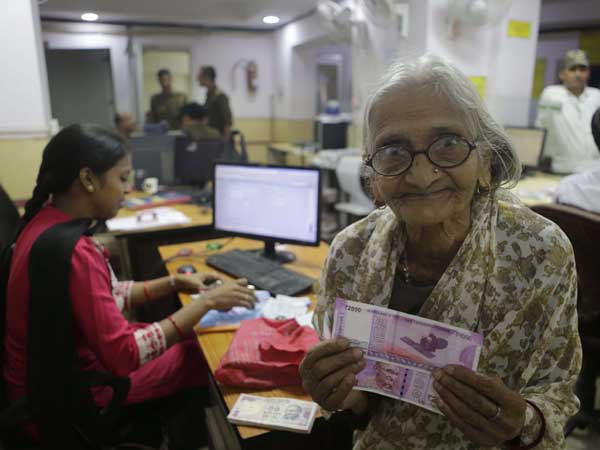
November 8, 2016 won’t fade from the memory. It was just the beginning of hardship as people had to stand in queues in front of ATMS for hours to withdraw money, many saw their hard earned incomes being declared illegal and were forced to part with it. There were many deaths as people were unable to bear the expenses of treatment. But, the government turned a blind eye to all these and said demonetisation’s larger purpose was to make India a tax compliant society.
Two years later, finance ministry officials asserted that demonetisation had achieved its 100 per cent objectives. They said demonetisation of high-value currency notes of Rs 500 and above in November 2016 achieved the objectives “quite substantially”. The RBI annual report said 99.3 per cent of Rs 500 and Rs 1,000 junked notes are back with the banks.
DEA secretary Subhash Chandra Garg had earlier said “I think demonetisation achieved its objective quite substantially with the objectives of the note ban like checking black money, ending terror financing, promoting digital transaction and weeding out fake currency notes being achieved.”
While political parties continue to hit out at the ruling NDA government over note ban, finance minister Arun Jaitley said that demonetisation led to more tax collection and higher growth. He is of the view that demonetisation of Rs 500/1,000 notes led to formalisation of economy, more tax collection and higher growth.
The larger purpose of demonetisation was to move India from a tax non-compliant society to a tax-compliant society, the finance minister said adding that this necessarily involved formalisation of the economy and curbing the black money.
“This is the positive impact of demonetisation. More formalisation of economy, more money in the system, higher tax revenue, higher growth after the first two quarters,” Jaitley pointed out.
“When the impact of demonetisation and other steps were analysed it was found that IT returns have increased 19 per cent and 25 per cent in the last two years,” Jaitley added
Similar views were expressed by Niti Aayog. Vice chairman of Niti Aayog Rajiv Kumar said demonetisation reduced cash transactions. “Who said the aim of demonetisation was to get back less money? Demonetisation impacted the markets and market psychology. How much transaction used to take place in cash (before the note ban), and what is the position now?,” he asked.
But, a few others disagree with this. Noted economists and PMEAC member Rathin Roy recently said in a TV interview that he cannot comment “whether it (robust personal income tax collections) is due to replacement of one set of notes with other set of notes”. A PMEAC (Prime Minister's Economic Advisory Council ) member refused to comment on if demonetisation was the sole reason behind surge in income tax collection.
German economist Norbert Harings said that cashless economy brought by demonetisation hurt the poor and the economy. In a column he said “demonetisation disproportionately hurt the poor as they were robbed of the free means of payment that they used to have at their disposal: cash and which was working well for them.”
Professor N R Bhanumurthy of National Institute of Public Policy and Finance said the results of demonetisation after two years are mixed. There are some unintended positvies due to the step which resulted in the formalisation of the overall informal sector. But here GST also has a big role to play along with demonetisation. Together they were the major policy shocks of the year 2016 and 2017. The increasing formal component of these initiatives saw tax base increasing, revenue buoyancy and rise in number of I-T returns.
But he says there were damages as well due to the note ban exercise.
“There was negative impact on small industry and it created liquidity problems for many. Demonetisation was a setback for demand, dampened the industrial activity and also the services sector. It dealt a severe blow to the 40-50 per cent unorganised components of the services sector. The blow to the demand might have created job loss but there is no data to quantify if there was any retrenchment due to demonetisation. But there were no new jobs, people shifted from old economy jobs to formal ones”, he said.
On November 8, 2016, prime minister Narendra Modi announced the demonetisation of high-value currency notes. Of the Rs 15.41 lakh crore worth Rs 500 and Rs 1,000 notes in circulation on November 8, 2016, notes worth Rs 15.31 lakh crore were returned to the banks. However, the case for and against demonetisation will continue.
RBI Guv to brief house panel
RBI governor Urjit Patel will brief the parliamentary panel on demonetisation on November 12 which will be his third time on the issue. The parliamentary panel has called Patel to brief it on the government’s demonetisation move and the actions and reactions to the economy over it. Former prime minister Manmohan Singh is also a member of the panel, headed by M. Veerappa Moily.
The 31-member Parliamentary Standing Committee on Finance has been deliberating on the issue for almost two years.
Patel has been called on November 12 to brief the committee's members on demonetisation and the “ramifications thereof”. He will also brief the committee on the banning of the Unregulated Deposit Schemes Bill and related issues.
Patel earlier shared details related to demonetisation with the panel in January and July last year. The panel could not adopt a draft report on the note-ban in August as BJP MPs on the panel, led by Nishikant Dubey, stalled the process. However, Moily has repeatedly said no report on demonetisation was tabled before the panel.



